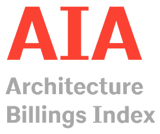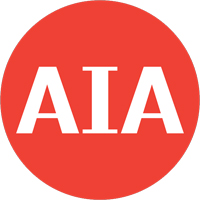March Marks Sixth Consecutive Month Of Growth For AIA Billings Index
 Washington, D.C. – The American Institute of Architects (AIA) reported that architecture firm billings rose for the sixth consecutive month in March, although the pace of growth slowed modestly from February.
Washington, D.C. – The American Institute of Architects (AIA) reported that architecture firm billings rose for the sixth consecutive month in March, although the pace of growth slowed modestly from February.
Overall, the AIA’s Architecture Billings Index (ABI) score for March was 51.0 (any score over 50 indicates billings growth), which still reflects a healthy business environment. While business conditions softened somewhat at firms located in the Northeast region, billings remained strong at firms located in the South and West regions.
“New project activity coming into architecture firms continues to grow at a solid pace. As a result, project backlogs—in excess of six months at present— are at their highest post-recession level,” said AIA Chief Economist Kermit Baker, Hon. AIA, PhD. “Business remains strong in the South and West, and firms with a residential specialization continue to set the pace.”
The following are key March ABI highlights:
• Regional averages: West (53.4), Midwest (50.7), South (53.2), Northeast (49.0)
• Sector index breakdown: multi-family residential (53.4), institutional (49.7), commercial/industrial (53.1), mixed practice (51.1)
• Project inquiries index: 58.1
• Design contracts index: 51.5
The regional and sector categories above are calculated as a three-month moving average, whereas the national index, design contracts, and inquiries are monthly numbers.
About the AIA Architecture Billings Index
The Architecture Billings Index (ABI), produced by the AIA Economics & Market Research Group, is a leading economic indicator that provides an approximately nine to twelve month glimpse into the future of nonresidential construction spending activity. The diffusion indexes contained in the full report are derived from a monthly “Work-on-the-Boards” survey that is sent to a panel of AIA member-owned firms. Participants are asked whether their billings increased, decreased, or stayed the same in the month that just ended as compared to the prior month, and the results are then compiled into the ABI. These monthly results are also seasonally adjusted to allow for comparison to prior months. The monthly ABI index scores are centered around 50, with scores above 50 indicating an aggregate increase in billings, and scores below 50 indicating a decline. The regional and sector data are formulated using a three-month moving average. More information on the ABI and the analysis of its relationship to construction activity can be found in the recently released White Paper, Designing the Construction Future: Reviewing the Performance and Extending the Applications of the AIA’s Architecture Billings Index available on the AIA’s website.
About The American Institute Of Architects
 For over 150 years, members of the American Institute of Architects have worked with each other and their communities to create more valuable, healthy, secure, and sustainable buildings and cityscapes. Members adhere to a code of ethics and professional conduct to ensure the highest standards in professional practice. Embracing their responsibility to serve society, AIA members engage civic and government leaders and the public in helping find needed solutions to pressing issues facing our communities, institutions, nation and world. For more information, visit www.aia.org.
For over 150 years, members of the American Institute of Architects have worked with each other and their communities to create more valuable, healthy, secure, and sustainable buildings and cityscapes. Members adhere to a code of ethics and professional conduct to ensure the highest standards in professional practice. Embracing their responsibility to serve society, AIA members engage civic and government leaders and the public in helping find needed solutions to pressing issues facing our communities, institutions, nation and world. For more information, visit www.aia.org.